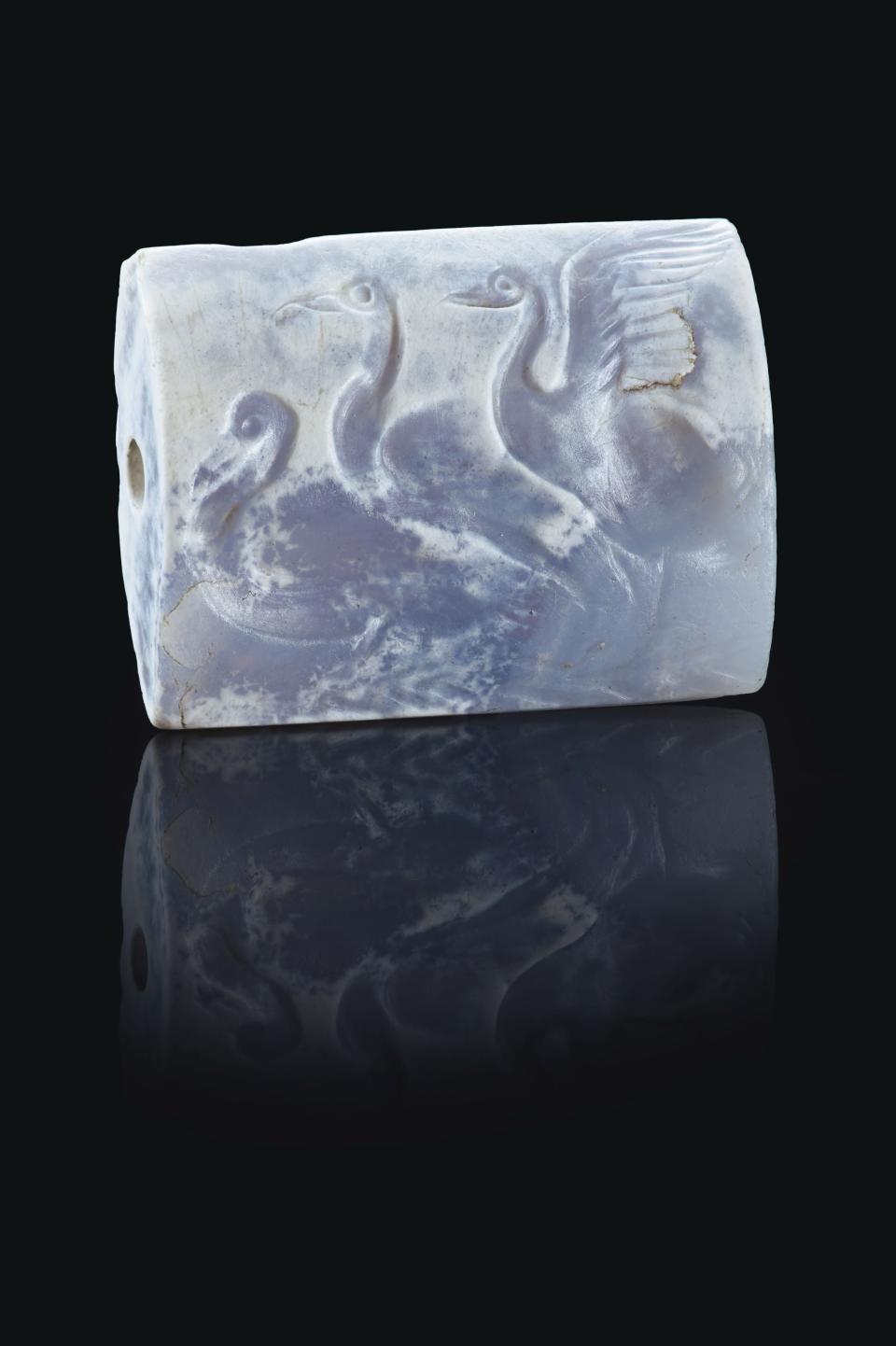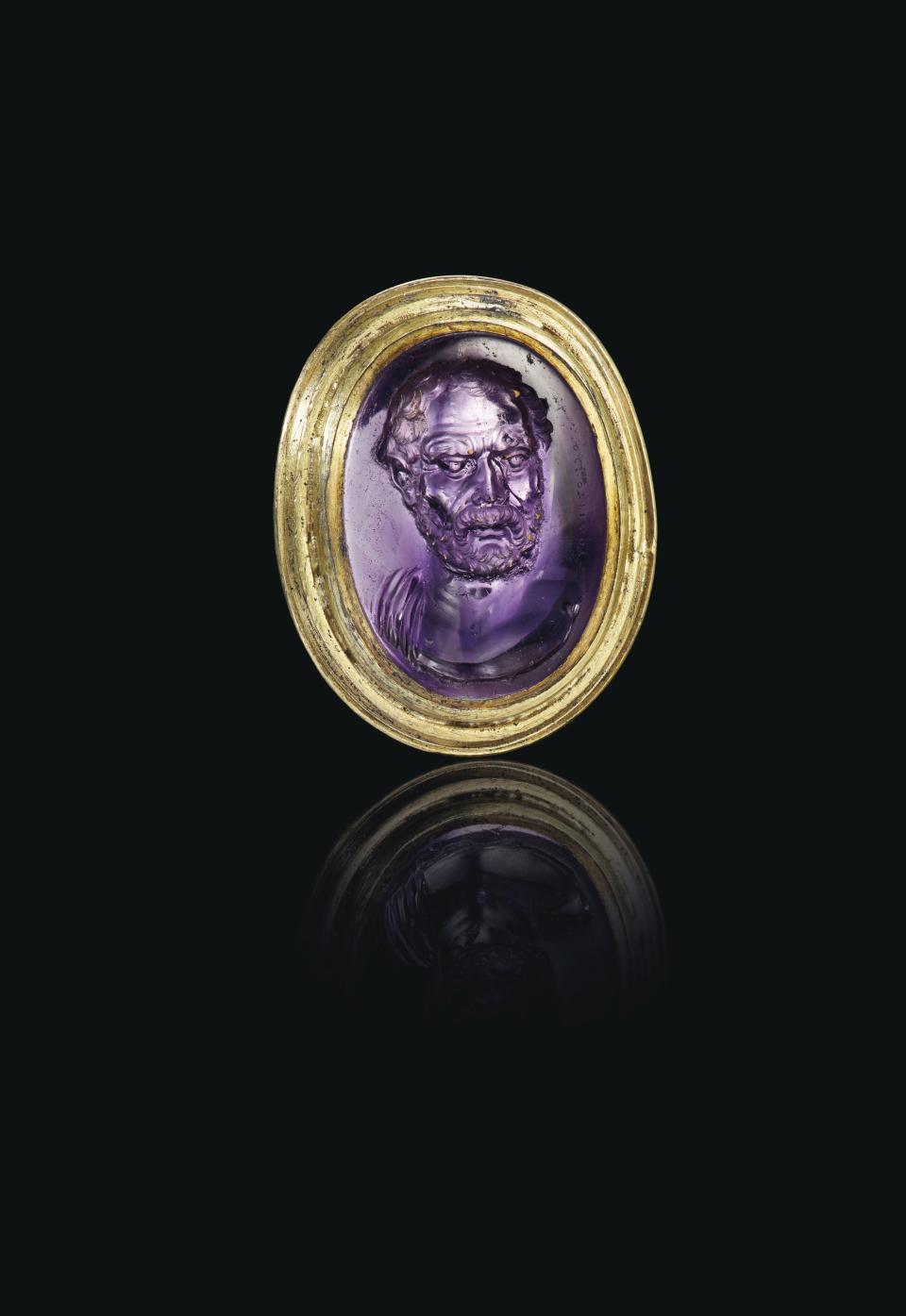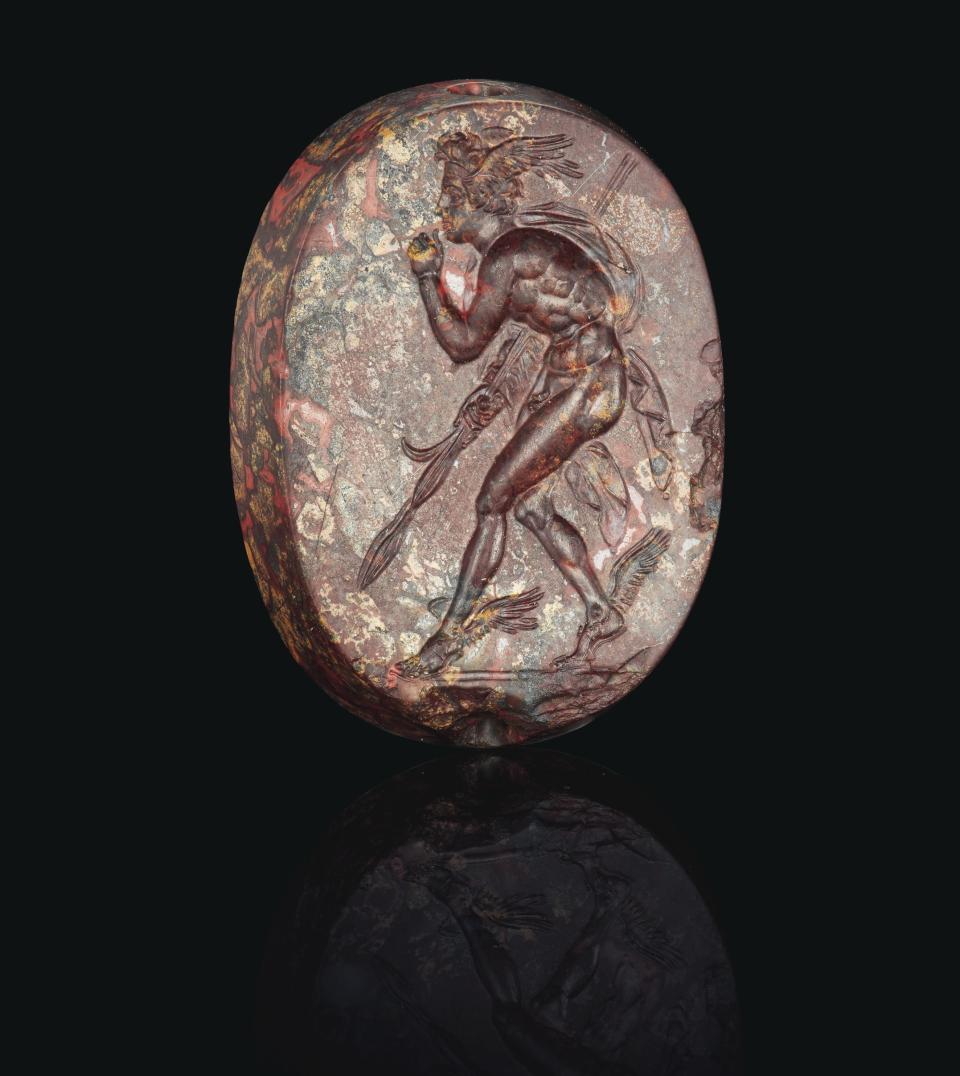Getty Museum Acquires Notable Collection of Engraved Gems
Decorative arts and gem enthusiasts, delight: The Getty Museum has acquired 17 antique gems at auction—all of which will now be part of the collection of the Getty Villa, the museum's impressive Greco-Roman Malibu outpost. The engraved jewels were bought from Giorgio Sangiorgi, a notable Roman art dealer. Interestingly, the Sangiorgi gems, as they are known, have been considered some of the finest privately held precious stones. They also have never been available for public viewing—and two of what are widely judged to be the finest ancient gems in existence are included. (Those two specimens are a Roman amethyst portrait and black chalcedony intaglio portrait, respectively.)

While Sangiorgi is best known for his work related to the history of Rome, many of the 17 jewels in question trace their origins to various periods of ancient Greece. The rings included skew more heavily toward Roman and Etruscan roots. And in fact, the two crown jewels of the collection—so to speak—are indeed rings. The black chalcedony intaglio portrait depicts Antinous, the lover of Emperor Hadrian. Of all its illustrious owners throughout the century, the 4th Duke of Marlborough stands out. The Duke is said to have assembled what may still be the single best collection of historic gems in the modern era. Within his collection, this piece "of an incredible beauty” was the linchpin.
Even more interesting to decorative arts aficionados is the fact that the amethyst portrait, which depicts a then-renowned orator, is signed by Dioskourides—Emperor Augustus's court gem engraver. The ring, with its sculptural quality and illustrious forebear, has for centuries generated curiosity.

“The acquisition of these gems brings into the Getty’s collection some of the greatest and most famous of all classical gems,” Timothy Potts, director of the J. Paul Getty Museum, said in a statement. “But the group also includes many lesser-known works of exceptional skill and beauty that together raise the status of our collection to a new level. Two such are the image of three swans on a Bronze Age seal from Crete, which has an elegance and charm transcending its early date, and the image of the semi-divine Perseus, a marvel of minute naturalism that cannot fail to enthrall. This acquisition represents the most important enhancement to the Getty Villa’s collection in over a decade.”

Originally Appeared on Architectural Digest

